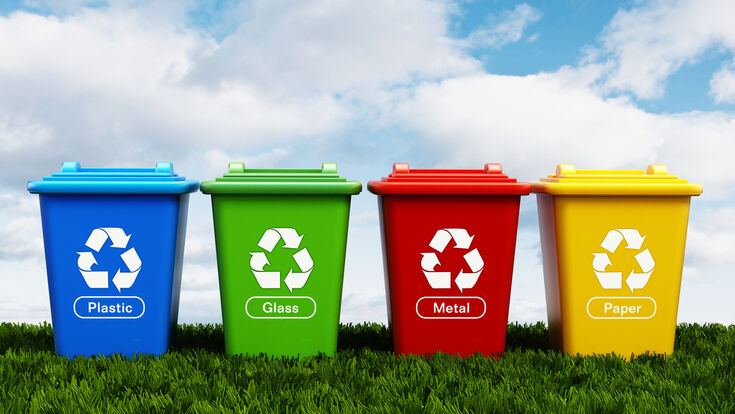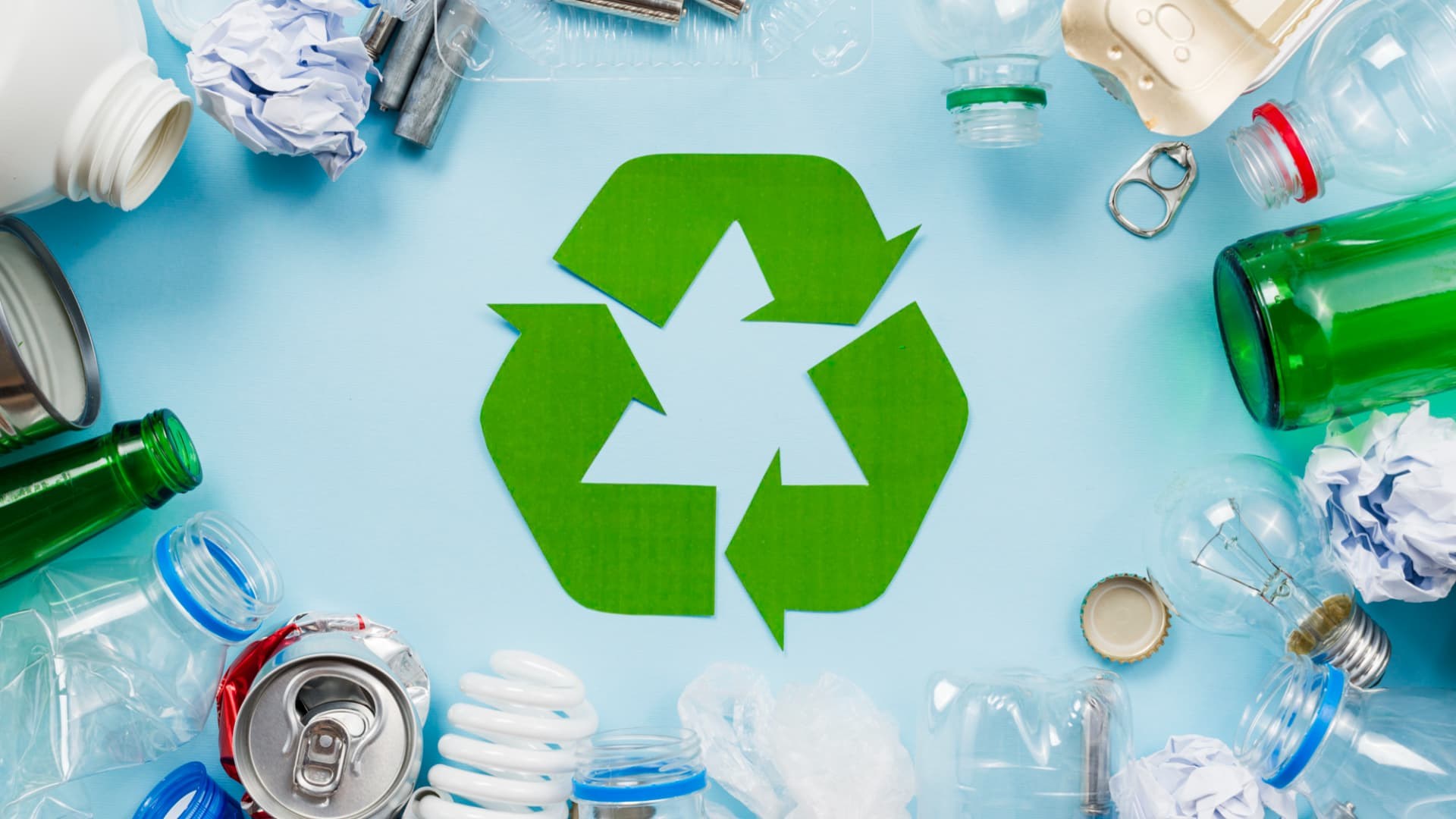Discover the Benefits of Recycling Lives Services for Your Company
Exploring Different Kinds of Waste in Modern Waste Monitoring Systems
The contemporary landscape of waste monitoring entails navigating an intricate array of waste kinds, each needing specialized handling and disposal approaches to mitigate environmental influences. Local strong waste, unsafe waste, digital waste, and natural waste each existing distinct challenges and opportunities for resource recuperation. Innovative solutions such as wise waste bins and waste-to-energy modern technologies are emerging as vital devices in improving effectiveness and sustainability. Recognizing these waste kinds is necessary for promoting public understanding and encouraging active involvement in sustainable practices. What techniques can efficiently resolve these varied kinds of waste while promoting a circular economy?
Community Solid Waste
Metropolitan strong waste, frequently referred to as home garbage or trash, encompasses a range of disposed of materials generated by residential, commercial, and institutional sources within a town. This waste stream generally includes products such as product packaging, food scraps, lawn trimmings, paper, plastics, textiles, and disposed of home items. The administration of local solid waste is an essential part of city preparation and public health and wellness, necessitating reliable collection, transportation, and disposal systems.
Efficient waste administration systems are developed to lessen ecological effect while making the most of source recovery. This usually entails a combination of strategies consisting of recycling, composting, and landfilling. Recycling programs target materials like paper, glass, metals, and specific plastics, diverting them from land fills and reintroducing them right into the production cycle. Composting organic waste, such as food scraps and lawn trimmings, not just reduces garbage dump use yet likewise generates useful soil amendments.
Districts must additionally address the logistical and financial challenges related to waste administration. Applying pay-as-you-throw systems, boosting public recognition, and purchasing technology can substantially boost waste diversion rates. By incorporating these practices, municipalities can foster sustainable neighborhoods, lower greenhouse gas exhausts, and conserve natural deposits.
Hazardous Waste

Efficient hazardous waste administration involves several important actions: recognition, disposal, partition, and treatment. Recognition involves the classification of waste based on its hazardous buildings. Partition makes sure that hazardous materials are kept independently from non-hazardous waste to prevent cross-contamination. Treatment approaches, such as chemical neutralization, incineration, and stablizing, are employed to minimize the poisoning, quantity, or wheelchair of the waste. Ultimately, disposal alternatives, including safe land fills and underground storage, are selected to make sure lasting containment.
Regulatory structures, such as the Resource Conservation and Recovery Act (RCRA) in the United States, offer guidelines and requirements for contaminated materials monitoring. Adherence to these policies, combined with innovations in waste therapy modern technologies, is essential in mitigating the threats connected with dangerous waste.
Electronic Waste
Electronic waste, commonly described as e-waste, stands for a quickly expanding obstacle in waste management systems internationally. This kind of waste encompasses disposed of electronic gadgets and equipment such as smart devices, computer systems, tvs, and various other electronic devices. The rapid pace of technical advancement, coupled with lowering item life-spans and customer demand for the most up to date devices, has significantly boosted the volume of e-waste produced annually.
E-waste is specifically bothersome because of its complex make-up, typically including hazardous compounds like lead, cadmium, and mercury, which pose considerable environmental and health and wellness risks otherwise appropriately handled. On the other hand, e-waste also contains important products such as silver, copper, and gold, which can be recovered and recycled. The twin nature of e-waste-- both useful and unsafe-- necessitates specialized handling, reusing, and disposal processes.
Reliable e-waste management entails rigid regulative structures, visit homepage durable collection systems, and progressed recycling innovations. Public understanding and engagement are important, as inappropriate disposal techniques, such as illegal unloading and informal recycling, intensify ecological contamination and carcinogen. Improving e-waste administration techniques is vital for reducing eco-friendly effect and recuperating useful sources in a significantly electronic globe.

Organic Waste
Organic waste, comprising cooking area scraps, lawn trimmings, and agricultural residues, stands for a substantial section of the international waste stream. This sort of waste is eco-friendly, suggesting it can be damaged down by microorganisms right into easier organic compounds. Despite its possibility for all-natural decay, incorrect management of organic waste can bring about negative environmental influences, consisting of the discharge of greenhouse gases such as methane, which add to climate modification.
Effective administration of natural waste is important for decreasing these ecological effects (recycling lives services). Composting is a widely embraced technique, changing organic waste right into nutrient-rich compost that can enhance soil health and farming performance. Furthermore, anaerobic food digestion is an emerging innovation that converts natural waste right into biogas, a sustainable energy source, and digestate, which can be made use of as fertilizer
Municipalities and waste management entities should apply durable natural waste collection and therapy programs to make best use of the advantages of these processes. Public education campaigns can additionally play a pivotal function in encouraging families and services to separate natural waste from various other kinds of waste. By focusing on the management of natural waste, cultures can lower landfill usage, reduced greenhouse gas discharges, and develop important byproducts for farming use.

Cutting-edge Waste Management
In the realm of waste management, innovative methodologies are changing just how cultures manage their refuse, aiming for sustainability and effectiveness. These innovations encompass a variety of modern technologies and practices that enhance recycling prices, lower landfill dependence, and lower ecological influence. One popular advancement is the execution of wise waste containers outfitted with sensors that check read more fill levels and enhance collection courses. This not only decreases fuel usage however also minimizes greenhouse gas emissions.
An additional noteworthy development is the fostering of waste-to-energy (WtE) innovations. By converting non-recyclable waste right into functional energy through procedures such as incineration and anaerobic digestion, WtE reduces landfill concern and offers a renewable resource resource. Innovations in chemical recycling permit for the breakdown of intricate plastics right into their original monomers, allowing the creation of brand-new, high-quality plastic products.
Additionally, the circular economic situation design is gaining grip, emphasizing the style of products and systems that focus on reusability and resource efficiency. This holistic technique encourages markets to minimize waste generation from the start. Through these cutting-edge methods, modern-day waste administration systems are not only dealing with the prompt challenges of garbage disposal but additionally leading the way for a more lasting future.
Conclusion
A comprehensive understanding of metropolitan solid waste, contaminated materials, digital waste, and natural waste, paired with the implementation of look these up ingenious waste administration remedies, is necessary for mitigating ecological influences. Integrating innovations such as clever waste bins and waste-to-energy systems can improve performance and sustainability. Reliable waste management strategies not only foster source recovery but additionally promote public understanding and participation, inevitably adding to the advancement of a circular economy.
The modern landscape of waste monitoring includes browsing a complicated array of waste kinds, each calling for specialized handling and disposal techniques to mitigate environmental impacts. Community strong waste, dangerous waste, digital waste, and organic waste each existing distinctive obstacles and opportunities for resource healing.Electronic waste, commonly referred to as e-waste, represents a swiftly expanding difficulty in waste administration systems around the world. Via these innovative techniques, modern waste monitoring systems are not just resolving the prompt obstacles of waste disposal yet likewise paving the method for an extra lasting future.
A thorough understanding of local strong waste, harmful waste, digital waste, and natural waste, combined with the execution of ingenious waste management solutions, is vital for minimizing ecological effects. (recycling lives services)